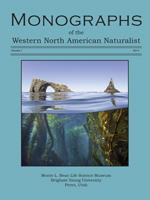The Chumash village of Qshiwqshiw, located on eastern Santa Rosa Island, is described in ethnographic sources as one of the largest Chumash villages on the northern Channel Islands, with 4 chiefs and 119 baptisms according to mission records. The village is thought to correlate with 2 archaeological sites (CA-SRI-85 and CA-SRI-87) that contain large and dense shell-midden deposits. Despite the importance of these sites for helping understand Late (650–168 cal BP) and Historic (AD 1769–1830) Period Chumash lifeways, only limited surface collections, one small column sample, and 4 radiocarbon dates were previously available, leaving unanswered important questions about the chronology and structure of these sites. To help fill these gaps, we recently excavated, mapped, and obtained several new radiocarbon dates for CA-SRI-85 and CA-SRI-87. Radiocarbon dating and artifact analyses demonstrate that CASRI- 85 served as an important Late Period village that had continued occupation into the Historic Period. Additional radiocarbon dates and glass beads confirm that CA-SRI-87 was likely the epicenter of Historic Period occupation, but testing also revealed that the site was occupied about 3000 years ago. The data paint a complex occupational history for both sites and provide the chronological and spatial context for future investigations into the historical ecology and cultural landscape of eastern Santa Rosa Island.
How to translate text using browser tools
21 July 2014
Defining the Historic Landscape on Eastern Santa Rosa Island: Archaeological Investigations at Qshiwqshiw
Todd J. Braje,
Torben C. Rick,
Leslie Reeder-Myers,
Breana Campbell,
Kelly Minas





